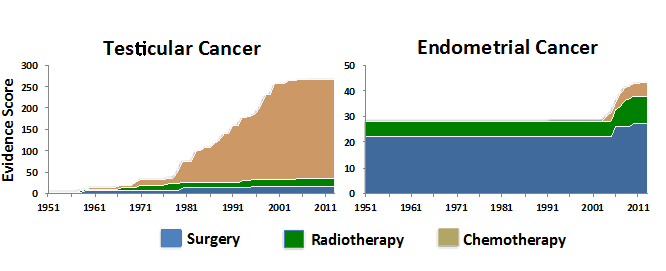
Conversations and healthy debate about issues facing our industry and the health care system are critical to addressing some of today’s challenges and opportunities. The Catalyst welcomes guest contributors including patients, stakeholders, innovators and others to share their perspectives and point of view. Like in our Conversations series, views represented here may not be those of PhRMA, though they are no less key to a healthy dialogue on issues in health care today.
To continue the dialogue about progress made in the fight against cancer, we’re pleased to host a guest blog from Jacqueline Ferguson, senior director of Global Oncology Corporate Affairs, Eli Lilly and Company. In this capacity she also leads Lilly Oncology's PACE initiative.
Where are we in the fight against cancer? How did we get here? And what progress remains to be made? If you look at the history of progress against cancer, you’ll see that progress rarely consists of a “silver bullet” or giant leap forward. Instead, it is a product of continuous innovation, step-by-step progress that, over time, results in more effective cancer treatments.
Continuous innovation has played a significant role in helping people with cancer have better treatment experiences, live longer, and in some cases, beat their cancer altogether. However, it can be difficult to visualize the full scope of this progress.
 Lilly has helped develop a new tool that helps to do this as part of the PACE initiative--which stands for Patient Access to Cancer care Excellence. PACE is a collaboration between patients, advocates, scientists, policymakers, and many others who are interested in furthering the fight against cancer. We believe that by working together through science, education, and advocacy, we can build momentum that leads to new treatments and cures for cancer, today and in the future.
Lilly has helped develop a new tool that helps to do this as part of the PACE initiative--which stands for Patient Access to Cancer care Excellence. PACE is a collaboration between patients, advocates, scientists, policymakers, and many others who are interested in furthering the fight against cancer. We believe that by working together through science, education, and advocacy, we can build momentum that leads to new treatments and cures for cancer, today and in the future.
From its beginning four years ago, PACE has advocated that patients receive access to the most effective cancer care, and that the policy environment fosters the innovation that leads to new, high-quality treatments.
That’s why PACE recently launched the PACE Continuous Innovation Indicators™ (CII).The Indicators allow policymakers, researchers, patient advocates, and others to visualize progress against cancer over time, gain a better understanding of how value in cancer treatment evolves, and consider the potential impact of policy reforms on the speed of innovation. The indicators are not intended to guide clinical decision-making.
At the heart of the Continuous Innovation Indicators are thousands of pieces of evidence curated by trained analysts from authoritative, published sources, such as clinical trial records and meta-analyses, observational studies and historical references. Taken together, these data highlight both the relative success of different types of treatments as well as the growing value and impact of a medicine over time.
The Indicators also help illuminate the details of two important variables: treatment type and time. Because there are more than 200 types of cancer, it should come as no surprise that different treatments have had varying rates of success against different cancers. The Indicators help users understand the relative contributions of different categories of treatments on various cancer types. As you can see in these graphs, chemotherapy (indicated in brown) has played an enormous role in the successful treatment of testicular cancer, while surgery (indicated in blue) dominates treatment for endometrial cancer. Radiotherapy (in green) has played a relatively smaller role in both types of cancer.

Furthermore, the Indicators demonstrate how the value of a medicine increases over time. For example, a treatment may receive approval for one indication, but later prove effective against other cancer types or with different patient populations. In practice, this means that efforts to assess the value of a medicine when it’s first launched simply don’t account for the fact that value is dynamic. Policies that fail to recognize this reality do patients a disservice by potentially denying them access to a medicine that could provide them with enormous benefit.
The cures that exist today, the strides we’ve made against cancer, the new treatment options that give us great hope for the future: all of these have been and will continue to be the results of continuous innovation. With a deeper understanding of and support for continuous innovation from the cancer community as a whole, I believe we’ll see many more treatments and cures for cancer emerge in the years to come, ultimately helping more people proudly call themselves cancer survivors.




 Lilly has helped develop a new tool that helps to do this as part of the
Lilly has helped develop a new tool that helps to do this as part of the 
